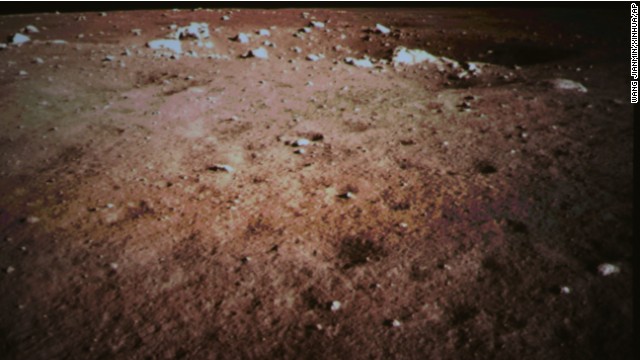Story highlights
- China's unmanned space craft successfully released a moon rover
- Three nations now have soft-landed on moon's surface
- The Jade Rabbit rover will study lunar surface
- China has rapidly built up its space program
China's first lunar rover deployed successfully from the unmanned spacecraft Chang'e-3 that landed on the moon Saturday.
Jade Rabbit (called Yutu in Chinese) is a six-wheeled lunar rover equipped with at least four cameras and two mechanical legs that can dig up soil samples to a depth of 30 meters.
The solar-powered rover will patrol the moon's surface, studying the structure of the lunar crust as well as soil and rocks, for at least three months. The robot's name was decided by a public online poll and comes from a Chinese myth about the pet white rabbit of a goddess, Chang'e, who is said to live on the moon.
Weighing 140 kilograms, the slow-moving rover carries an optical telescope for astronomical observations and a powerful ultraviolet camera that will monitor how solar activity affects the various layers -- troposphere, stratosphere and ionosphere -- that make up the Earth's atmosphere, China's information technology ministry said in a statement.
The Jade Rabbit is also equipped with radioisotope heater units, allowing it to function during the cold lunar nights when temperatures plunge as low as -180┬░C (-292┬░F).
The moon exploration makes China one of only three nations -- after the United States and the former Soviet Union -- to "soft-land" on the moon's surface, and the first to do so in more than three decades.
China's space program
China has rapidly built up its space program since it first sent an astronaut into space in 2003. In 2012, the country conducted 18 space launches, according to the Pentagon.
The Chang'e-3 mission constitutes the second phase of China's moon exploration program, which includes orbiting, landing and returning to Earth.
In 2010, China captured images of the landing site for the 2013 probe, the Bay of Rainbows, which is considered to be one of the most picturesque parts of the moon.
Within the next decade, China expects to open a permanent space station in the Earth's orbit.
But scientists in the United States have expressed concern that the Chang'e-3 mission could skew the results of a NASA study of the moon's dust environment.
The spacecraft's descent is likely to create a noticeable plume on the moon's surface that could interfere with research already being carried out by NASA's Lunar Atmosphere and Dust Environment Explorer (LADEE), Jeff Plescia, chair of NASA's Lunar Exploration Analysis Group told news site Space.com in November.
The Chang'e-3 spacecraft blasted off from a Long March 3B rocket in China's Sichuan province on December 2 and reached the moon's orbit at 100 kilometers (about 60 miles) from its surface less than five days later.
On Tuesday, it descended into an elliptical orbit with its lowest point just 15 kilometers off the lunar surface, a spokesperson for China's Administration of Science, Technology and Industry for National Defense told Xinhua.
The Soviet Union's Luna 24 probe was the last space mission to land on the moon in August 1976 -- four years after the United States launched the manned Apollo 17 mission.







